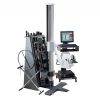
Skilled Service Documentation Tips for Reimbursement
Practice ManagementWithout thorough documentation, payers will assume treatments aren't needed and could deny reimbursement. Skilled service documentation proves the necessity of your treatment. Use these tips to show the necessity of treatment and ensure reimbursement.
Skilled service documentation is the most effective way to avoid reimbursement denials. It applies to practically any rehab professional billing for reimbursement, including Occupational Therapists, Physical Therapists, Chiropractors, and Certified Athletic Trainers (in some states).
All it really takes is documenting our skilled services. With increasing productivity requirements and constant changes in billing, it can be hard to keep our notes focused. We need to highlight what is most important: why what we do is necessary and unique.
Most third-party payers require services to be “reasonable and necessary.” To be reasonable, treatments and techniques need to be specific and effective. To be necessary, they need to be complex or sophisticated enough to require a trained medical professional. As rehab professionals, we naturally provide this kind of treatment. But sometimes, we can forget to explain all of this in our notes. Skilled service documentation reminds all those reading the note why the services performed are something only we as professionals can provide.
Get Your Reimbursement Claims Approved
The most obvious benefit from skilled service documentation is approved reimbursement claims. Skilled service documentation drastically increases our chances of reimbursement. In fact, one of the most common reasons for denials is “lack of medical necessity.” Usually, this actually means “lack of skilled service documentation.”
Without thorough skilled service documentation, payers will assume treatments aren’t needed. The same thing can happen with CPT codes. If they are new to the patient or used less frequently, they could seem unnecessary. Skilled service documentation proves the necessity of those CPT codes and the importance of the treatment. By documenting the skilled nature of our services, your notes will prove that treatment is necessary and unique.
Justifying the Plan of Care
Skilled service documentation can also justify changes to our plan of care. Without this step, denials can seem to be lurking behind every corner. Rehab professionals often worry about asking for extra visits, or to extend the length of treatment. It can feel counter-productive to show that a patient is slow to make progress, even if it’s for good reason.
Without explanation, a plateau or decline could cause a claims denial. But effective documentation explains the clinical reasoning. Skilled service documentation is an opportunity for us to explain what we see.
When a claims reviewer reads that a patient is declining, the treatment seems ineffective. But when our notes tell them why they are declining, and how sessions are helping, treatment is obviously vital. With effective documentation, you can expect approval on additional visits. You can accurately convey changes in progress without worrying about an issue with reimbursement.
According to CMS guidelines, “If at any point in the treatment of an illness it is determined that the treatment is not rehabilitative, or does not legitimately require the services of a qualified therapist for management of a maintenance program as described below, the services will no longer be considered reasonable and necessary.” This criteria notably does not include plateaus in progress, frequency of visits, or length of treatment. It’s all about the documentation! So how can we actually use this in our practice?
Use the Right Terms
Step one is to get the attention of the third-party payers. When reviewers examine medical documentation, they look for evidence of your skill and your reasons for treatment. The treatment must be reasonable, proven to be effective. Treatment must also be necessary, something that could not be administered by a layperson. So we need to quickly communicate these concepts.
Notes should include words and phrases that stand out to reviewers. Even if they are just skimming our notes, they are looking for key phrases. Include terms such as:
- Graded
- Facilitated
- Instructed
- Modified
- Adapted
- Adjusted
- Analyzed
- Trained
- Incorporated
- Modeled
- Progressed
- Reduced
- Advanced
- Monitored
- Assessed
- Engaged
- Directed
- Repositioned
- Upgraded
- Downgraded
- Provided compensatory strategies
- Cued
Basically, skilled service documentation should show our specialized services. Trained professionals are the only ones able to treat these patients. Treatment should display our expertise, clinical judgment, and abilities.
These should be skills that no family member or caretaker could provide. These include analyzing the patient, guiding them, and educating them. When we increase or decrease the complexity of a task, we show clinical reasoning. When we give instructions for a home program, we give a unique perspective. We just need to remember that in our notes.
Justify Your Treatment Approach
Now that we have convinced them we are indeed administering specialized treatment, we look to our methods. CMS guidelines emphasize the importance of medical necessity in treatment. We should plan our sessions with a purpose. As we provide our skilled services, we need to have a reason behind it.
Justification of the treatment approach is simply explaining why. We know why we chose to have a patient perform a certain number of exercises with a certain number of breaks. We don’t provide hands-on treatment just to fill time. But the documentation needs to explain that.
We have the opportunity during our skilled service documentation to show that these choices are not arbitrary. Documentation reviewers are not all-knowing. They may have a medical insurance background, but you are the specialist on your own patient. Explain to them what you see, so that they understand the choices you are making.
Show Your Skills
After years of practice, things that have become second nature may escape notice in documentation. The awareness of why we do what we do can lessen over time because our treatment approaches can become reflexive. We stop noticing all the small things we do during treatment. This is why we need to remember to ask ourselves that same question: why?
During a treatment session, did you modify your approach at any time? For what reason? What limitations did the patient demonstrate that you responded to? How did you adjust your approach to better help your patient? Did you give any verbal, physical, or visual instructions or guidance? What are the recommendations for home exercise? Did you educate the patient or involve the caretakers? Explaining these things with thorough skilled service documentation can help showcase your skill as a provider.
Explain Plateaus or Decline
Every patient is different. No matter how specialized our treatment is or how well we have planned, we can’t always predict progress. It can be hard to know exactly what gains a patient will make, or when. This does not indicate a lack of skill on your part! A slow-down in progress does not mean you aren’t doing the best treatment for that patient. Continue to show through your documentation how you are using your skills. Explain why progress has changed, for the better or worse.
Is the patient’s progress limited due to their environmental limitations at home or otherwise? Will you increase sessions to compensate for the lack of home carryover? Has the patient experienced a change of routine (such as a COVID-19 lockdown) that would require an extension of care to address the established goals? Is the patient unable to implement their home program due to financial limitations? Did you offer alternative suggestions to overcome that? When we explain this, we prove we are still needed.
It Is Possible!
Skilled service documentation does not have to be as overwhelming as it sounds. It just requires a little bit of extra thought. Take time to prove in your notes that your treatments are reasonable and necessary. Include action words that show how you are involved in your patient’s treatment. Justify the approach you are taking by proving that receiving your services is medically necessary. Showcase the skills you have as a medical professional. Explain what is barring progress and how you plan to counteract it. In one year, CMS denied 40 million claims1. With skilled service documentation, none of the millions of claims denied this year will be yours.
Sydney Moninger, COTA/L is an Occupational Therapy Assistant and freelance writer. She has more than 10 years of clinical experience working in pediatric, orthopedic, and geriatric settings. Most recently, she has been helping patients at a pain management center for orthopedic injuries. Sydney is passionate about patient education and increasing health literacy in the community, which is what got her started in her writing in the first place. She loves discovering new perspectives that improve her clinical practice, and connecting with others on LinkedIn or her Upwork page.
References:
- Pollitz, K. and McDermott, D. 2021. “Claims Denials and Appeals in ACA Marketplace Plans”. KFF. https://www.kff.org/private-insurance/issue-brief/claims-denials-and-appeals-in-aca-marketplace-plans/
- Schwartz, D. et al. 2012. “Physical, Occupational, and Speech Therapy Services”. CMS. https://www.cms.gov/Research-Statistics-Data-and-Systems/Monitoring-Programs/Medical-Review/Downloads/TherapyCapSlidesv10_09052012.pdf
- Bohnett, C. 2019. “4 Common reasons for PT Claim Denials (And What to Do About Them)”. WebPT. https://www.webpt.com/blog/4-common-reasons-for-pt-claim-denials-and-what-to-do-about-them/





